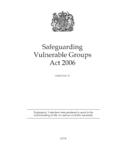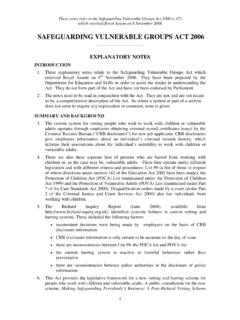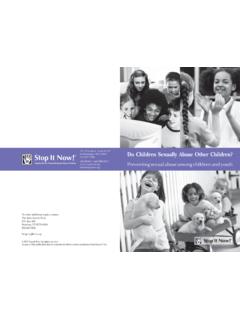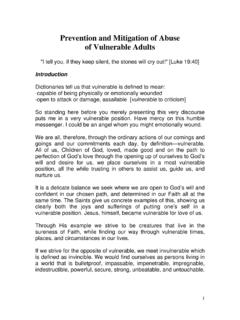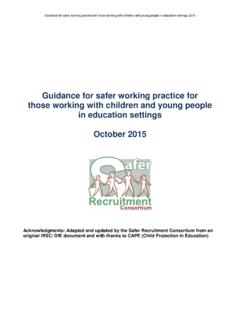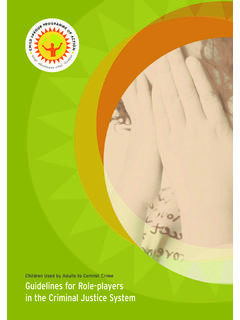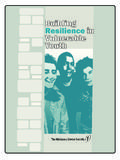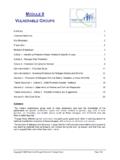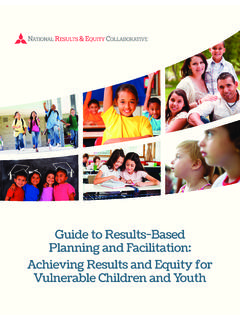Transcription of CHILDREN ARE NOT LITTLE ADULTS - WHO
1 TRAINING FOR THE HEALTH SECTOR. [Date Place Event . Event Sponsor . Sponsor Organizer]. CHILDREN ARE NOT LITTLE ADULTS . CHILDREN 's Health and the Environment WHO Training Package for the Health Sector World Health Organization July 2008 version 1. <<NOTE TO USER: Please add details of the date, time, place and sponsorship of the meeting for which you are using this presentation in the space indicated.>>. <<NOTE TO USER: This is a large set of slides from which the presenter should select the most relevant ones to use in a specific presentation. These slides cover many facets of the problem. Present only those slides that apply most directly to the local situation in the region.>>. CHILDREN are not LITTLE ADULTS CHILDREN NEED HEALTHY ENVIRONMENTS. Health is more than absence of illness CHILDREN need healthy environments in which to grow and develop, play and learn ADULTS must ensure that CHILDREN are protected from environmental threats Now and for generations to come!
2 2. All CHILDREN deserve the right to grow up in a healthy environment where they can reach their full potential as citizens of the world. Sustainable development has at its core healthy CHILDREN . Health is much more than mere absence of illness. It is the responsibility of today's ADULTS to identify hazards and conditions that impair CHILDREN 's ability to grow and mature safely and in good health. Health is more than absence of illness CHILDREN need healthy environments in which to grow and develop, play and learn Their environments are complex, multiple and changing. ADULTS must ensure that CHILDREN are protected from: exposures to toxic chemicals, physical injury and infections;. poverty and malnutrition; and child labour. Now and for generations to come! <<NOTE TO USER: Although the term " CHILDREN " is used to cover all age-groups from birth to age 19, strict WHO terminology refers to "newborns" (1 to 28 days), "infants".
3 (up to 12 months), " CHILDREN " (from 1 up to 10 years), "adolescents" (10 to 19 years). Please note that UNICEF and other organizations may use different age groupings (UNICEF considers CHILDREN as being up to 18 years old).>>. Ref: CHILDREN in the New Millennium; Environmental Impact on Health. UNEP/UNICEF/WHO, 2002 ( ). CHILDREN are not LITTLE ADULTS LEARNING OBJECTIVES. AFTER THIS PRESENTATION, INDIVIDUALS WILL BE ABLE TO: List ways why risks to CHILDREN from environmental hazards are different from those for ADULTS Illustrate CHILDREN 's increased and unique vulnerabilities to environmental threats Understand the relationship between CHILDREN and the environment starting before conception and continuing throughout development Propose remedial and preventive actions 3. After this talk, we hope that you will be able to satisfy these four learning objectives: Be able to list ways in which risks to CHILDREN from environmental hazards are different from those for ADULTS .
4 Be able to illustrate CHILDREN 's increased and unique vulnerabilities using real-world examples of environmental threats: biological;. physical; and chemical. Understand that the relationship between CHILDREN and their environment begins before conception and continues throughout development. Propose remedial and preventive actions. Refs: ATSDR Case Study on Pediatric Environmental Health, 2002. ( ). CHILDREN 's Health and the Environment A global perspective. A resource guide for the health sector, WHO, 2004. American Academy of Pediatrics Committee on Environmental Health. Pediatric Environmental Health, 2nd ed. Etzel RA, Ed. Elk Grove Village, IL: American Academy of Pediatrics, 2003. CHILDREN are not LITTLE ADULTS CHILDREN ARE NOT LITTLE ADULTS . Giotto, National Gallery, Washington DC Raphael, National Gallery of Art, Washington, DC.
5 4. Until about 500 600 years ago, artists in Western traditions represented CHILDREN as miniaturized ADULTS just as we see in this 13th century icon. (See the painting on the left side of this slide.). Until about 50 60 years ago, doctors following the standard medical practices of the industrialized countries understood paediatric exposures as simple extrapolations from adult occupational exposures. On the right side of the slide you can see how artists of the Renaissance painted CHILDREN . By the Renaissance artists realized that CHILDREN were not simply miniaturized ADULTS : they have big heads, long trunks and short limbs, as seen in this "Madonna and Child" by Raphael. (right side). <<NOTE TO USER: Use images that are regionally or culturally appropriate for illustrating the inaccuracy of thinking of CHILDREN 's environmental risks simply as scaled down adult risk.
6 >>. Images: National Gallery of Art, Smithsonian Institute, Washington, DC. CHILDREN are not LITTLE ADULTS CHILDREN ARE NOT LITTLE ADULTS . 1. Different and unique exposures 2. Dynamic developmental physiology 3. Longer life expectancy 4. Politically powerless Raphael, National Gallery of Art, Washington, DC. 5. We now recognize that CHILDREN , including the embryo, fetus, infant and all life stages until the completion of adolescence, are often at a different and increased risk from environmental hazards from that of ADULTS , for reasons that can be divided into four major categories. 1. CHILDREN often have different, and sometimes unique, exposures to environmental hazards from those of ADULTS . 2. Due to their dynamic developmental physiology CHILDREN are often subjected to higher exposures to pollutants found in air, water and food.
7 These exposures may be handled quite differently by an immature set of systems to the way they are dealt with in ADULTS . Furthermore, the developmental component of a child's physiology is changing: maturing, differentiating and growing in phases known as "developmental windows". These "critical windows of vulnerability" have no parallel in adult physiology and create unique risks for CHILDREN exposed to hazards that can alter normal function and structure. 3. CHILDREN have a longer life expectancy. Therefore they have longer to manifest a disease with a long latency period, and longer to live with toxic damage. 4. Finally, CHILDREN are politically powerless; they are defenceless. With no political standing of their own, they must rely on ADULTS to protect them from toxic environmental agents.
8 Each of these points is illustrated in more detail in the following slides. <<NOTE TO USER: Use images that are regionally or culturally appropriate for illustrating the inaccuracy of thinking of CHILDREN 's environmental risks simply as scaled down adult risk.>>. Image: National Gallery of Art, Smithsonian Institute, Washington, DC. CHILDREN are not LITTLE ADULTS 1. DIFFERENT AND UNIQUE EXPOSURES. Unique exposure pathways Transplacental Breastfeeding Exploratory behaviours leading to exposures Hand-to-mouth, object-to-mouth Non-nutritive ingestion Stature and living zones, microenvironments Location lower to the ground High surface area to volume ratio CHILDREN do not understand danger Pre-ambulatory Adolescence high risk behaviours 6. CHILDREN have unique exposure pathways.
9 They can be exposed in utero to toxic environmental agents that cross the placenta. Such exposures can be chemical (pollutants and pharmaceuticals), physical agents (radiation, heat) and biological (viral, parasitic). They can also be exposed, after birth, to pollutants that pass into their mother's milk. Neither of these routes of exposure occur in ADULTS or older CHILDREN . CHILDREN also have pathways of exposure that differ from those of ADULTS due to their size and developmental stage. For example, young CHILDREN engage in normal exploratory behaviours including hand-to-mouth and object-to-mouth behaviours, and non-nutritive ingestion which may dramatically increase exposure over that in ADULTS . CHILDREN 's physical differences also cause them to reside in a different location in the world, closer to the ground.
10 Pollutants such as mercury, solvents, pesticides are concentrated in their breathing zone and deliberate applications of pesticides and cleaning solutions make them more readily accessible to small CHILDREN . Because they are small, they have a high surface area to volume ratio and can have dramatically higher absorption through dermal contact than ADULTS . And, they may have much more limited ability to understand and move out of danger, both from toxic agents and dangerous situations which could result in injury. This characteristic is obvious in the pre-ambulatory phase, but persists through exploratory toddler behaviour and even into the high-risk behaviours seen in adolescence. CHILDREN are not LITTLE ADULTS 1. DIFFERENT AND UNIQUE EXPOSURES. TRANSPLACENTAL. Lessons from pharmaceuticals: thalidomide, diethylstilbestrol (DES), alcohol Many chemicals cross the placenta Lead, mercury, polychlorinated biphenyls (PCBs).










